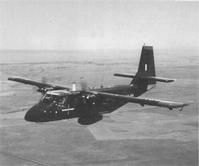


Chapter 13
I Colonial Origins
II First World War
III Between The World Wars
IV The Second World War
V Post-second World War
VI After The Joint Project
VII Science And Decisions At The Top
VIII Armed Services Technology
i Army Design
ii Navy Design
iii Air Force Investigations
iv Food Science
IX New Tasks And Projects
X Transfer Of Research And Development
XI Acknowledgement
References
Index
Search
Help
Contact us

Air Force Investigations
A major technical concern of the Air Force was the continuing airworthiness of its aircraft, some of which had been subjected to many years of service and were exhibiting the signs of ageing, which defence scientists had shown could be detected by adopting techniques of non-destructive examination. Scientific research in the ARL had demonstrated the relationships between structural fatigue and flight loading and investigations undertaken by the RAAF Aircraft Research and Development Unit had determined the spectrum of flight loading which would be encountered during operation of individual aircraft types.Contracts were awarded to industry to develop an airborne data recorder and analyser based on ARL ideas and embodying its patented strain-range-pair-counter which received information from up to twelve transducers attached to the structure. A ground-based data read-out computer was used to extract data and convert it to useful information concerning accumulation of fatigue damage. The aircraft response to any contemplated store had to be thoroughly checked. This was particularly so for the aircraft wing structure.
Australian industry had maintained a capability of designing and developing less complex aircraft for military use, the best example being the Nomad produced by the Government Aircraft Factory. In addition to civil applications this aircraft was produced for the Army in 1972, its excellent short take-off and landing characteristics from unprepared fields being of particular value. The RAAF acted as Airworthiness Authority and required a full wing fatigue test to be carried out to evaluate safe life estimates.
A useful primary training aircraft, the CT4, had also been purchased by the RAAF essentially from local sources. This aircraft, although manufactured by a New Zealand company, was derived in fact from the Victa Airtourer designed by H. A. Millicer, in Australia, and initially developed locally. It was a lack of commercial enterprise in Australia which caused the design to be acquired elsewhere.
When the RAAF were contemplating an advanced trainer in 1980, a specification was written reflecting particular Australian operating requirements. As no candidate aircraft was immediately in project from overseas sources, a consortium of the three aircraft manufacturing firms, CAC, GAF and Hawker de Havilland was formed in 1981 to prepare a design to be manufactured locally. Two versions were in fact studied, the later one with a more powerful turbo-propellor engine reflecting changing Air Force training needs. A decision was taken by Defence Authorities in 1986, however, to prefer a Swiss aircraft on the score of its lower cost. The Consortium's design team rapidly dissolved.

Organisations in Australian Science at Work - Commonwealth Aircraft Corporation (C.A.C.); Government Aircraft Factories; Hawker de Havilland; R.A.A.F. Aircraft Research and Development Unit
People in Bright Sparcs - Millicer, Henry A.
 |
Australian Academy of Technological Sciences and Engineering |  |
© 1988 Print Edition pages 964 - 965, Online Edition 2000
Published by Australian Science and Technology Heritage Centre, using the Web Academic Resource Publisher
http://www.austehc.unimelb.edu.au/tia/948.html